Overcoming the beaten path, creating new development space
In recent years, the regional and world situation has undergone many profound, epochal, and unpredictable changes; the strong impact of the Fourth Industrial Revolution has opened up development space based on knowledge and human potential. In that context, our Party and State have proactively and actively integrated comprehensively and deeply into the regional and world economy ; at the same time, focused on innovating the Party's leadership method, perfecting the organization of the state administrative apparatus according to modern governance methods, linking administrative reform with legislative and judicial reform on the basis of promoting the application of digital technology, effectively utilizing scientific and technological advances and achieving "great achievements of historical significance, developing more strongly and comprehensively than in the years before the renovation... Our country has never had such a foundation, potential, position and international prestige as today" (2) .

Cai Mep Port is ranked in the top 11 best container ports in the world_Photo: Document
Faced with new development requirements, our country faces "issues, limitations, slowness, and lack of determination in implementing the policy of innovation and reorganizing the apparatus of the political system, causing many serious consequences. The cumbersome apparatus causes waste and hinders development, which is one of the reasons why the Party's policies and guidelines are slow to enter into practice or some policies are implemented or implemented in form in reality" (3) . From a specific perspective: 1- The administrative structure maintains too many provinces (many provinces are small in scale, with low budget revenue), causing the administrative apparatus to become multi-layered and focal points. 2- Fragmented infrastructure, limited resources, difficulty in attracting large investments, and difficulty in synchronizing policies and guidelines. 3- Expenditures from the annual budget for the organization and operation of the apparatus of the political system account for a very large proportion (about 70%). 4- Existing administrative boundaries hinder planning work, lack regional connectivity, and make it difficult to optimize resources. 5- The development strategies and plans of each locality in the region are sometimes out of sync with each other, causing great challenges to the development process of the region.
In recent years, our country has focused on building increasingly diverse and modern infrastructure; gradually developing in depth, taking science - technology and innovation (S&T and I&T) as the driving force for growth when the qualifications and capacity of cadres and civil servants are increasingly improved, the distance in space and management time is almost no longer a barrier. Therefore, the establishment of large-scale administrative units to create new development spaces, attract strategic investment associated with effective coordination of resources at the regional and area level is urgent. From this approach, creating new development spaces is understood as organizing and rearranging the development space of each locality, region or area to ensure scientific nature in order to eliminate unhealthy competition, conflicts of interests, and locality between localities to optimize the use of resources, creating a foundation and momentum for rapid and sustainable development in new requirements.
The policy of rearranging provincial and commune-level administrative units, ending the operation of district-level administrative units to realize the nation's aspiration to rise up, building a "strong Vietnam by 2045" is a revolution of historical significance, a strategic transformation with a long-term vision, aiming at synchronous and sustainable development, meeting the inevitable objective requirements to create a new development space for the country's dynamic regions. With political determination, a positive, urgent and serious spirit, from July 1, 2025, 34 provinces and cities will put into operation the two-level local government organization with the goal of unblocking and promoting all resources, taking advantage of opportunities for rapid and sustainable development.
Practice in the Southeast region
With its important position and role in socio-economic development, ensuring national defense, security and foreign affairs of the country, in recent years, the Southeast region has always closely followed the Party's viewpoints and policies, the State's policies and laws to be proactive, creative and pioneering in innovation to effectively exploit available potential and advantages. Thanks to that, the Southeast has gradually become a dynamic and key economic region, making important contributions to economic growth, exports, budget revenue and job creation for the whole country.
However, in the country's overall development strategy to 2030, with a vision to 2045, the Politburo stated (4) : "The Southeast region still has many limitations, weaknesses, difficulties, and major challenges: Development is not commensurate with its potential and advantages; some important targets have not been achieved as set. Economic growth tends to slow down and is lower than the whole country; contribution to the total state budget revenue decreases, labor productivity growth is low, planning and implementation of plans are slow. The regional and inter-regional infrastructure network, especially intra-regional and inter-regional transport infrastructure, is still lacking, weak, and unsynchronized, affecting the development and spread of the region". From a specific perspective (5) , in the first 6 months of 2025, the Southeast region continues to face a number of barriers, the GRDP growth rate tends to slow down, estimated at 7%, lower than the national average (7.52%); the region's infrastructure is not yet synchronous, some bottlenecks persist (urban traffic congestion, flooding, lack of land for development, mechanical population pressure, environmental pollution, impacts of climate change); industrial development mainly depends on enterprises with foreign direct investment, low added value, limited production chain linkages; industrial parks are not distributed reasonably, infrastructure is still weak, lacking linkages with production support services; the logistics ecosystem is slow to form, not meeting the needs of goods circulation of a key economic region.
Faced with barriers that hinder regional development, the arrangement of provincial-level administrative units brings many great and practical benefits, demonstrated through the following basic contents:
Firstly, the merger of Ho Chi Minh City with Binh Duong and Ba Ria - Vung Tau provinces, named Ho Chi Minh City (HCMC), "is the crystallization of common intelligence and will for development, to form a megacity - a financial, production, logistics and innovation center of regional and world stature. This new development space is built on a long-term vision, aiming at synchronous, sustainable and scientific development" (6) . In terms of the outstanding points of each locality, Ho Chi Minh City is the economic, cultural, educational - training, science - technology and innovation center, a hub for international exchange and integration, with great attraction and spread in the region; Binh Duong province has a large land area, a fairly synchronous regional traffic infrastructure, attracting a large number of foreign direct investment enterprises, is the industrial capital of the country, with a high urbanization rate; Ba Ria - Vung Tau province has advantages in tourism, petrochemical industry, supporting industry, processing industry, manufacturing, seaport services and logistics. After the merger, Ho Chi Minh City has the following advantages: 1- New development space is expanded, becoming a megacity of regional and Asian stature; 2- Abundant human resources, favorable in attracting and developing high-quality human resources; 3- Planning work, solving infrastructure and traffic problems are synchronously connected with existing satellite cities; 4- Strongly attracting large investors in the world, developing diversely and comprehensively, creating many job opportunities; 5- Optimally exploiting the modern Cai Mep - Thi Vai seaport system and resources with comparative advantages... These are the conditions for Ho Chi Minh City to enhance its economic competitiveness, be the growth nucleus, continue to play a leading role, orienting the development of the Southeast region.
Second, Long An and Tay Ninh provinces have similar economic structures, both located in the Southern key economic zone; possessing a border position, with a border gate with the Kingdom of Cambodia. After the merger, Tay Ninh province has the following advantages: 1- Expanded development space, becoming an attractive destination for domestic and foreign investors; 2- A "golden opportunity" to optimize planning, investment, and technical infrastructure development, avoiding duplication and dispersion of resources; 3- The transport infrastructure system is focused on investment, with Long An international port playing a vital role, full of potential in transporting goods between industrial parks, supporting production and export; 4- Many previous administrative units of Long An and Tay Ninh provinces did not meet the natural area standards when standing independently, but after merging, they created administrative units large enough to build modern satellite cities, large-scale concentrated industrial parks, advanced logistics systems and high-tech agricultural specialized areas. Thus, Tay Ninh province has the role of connecting other localities in the Southern key economic region and the Mekong Delta; developing processing and manufacturing industries based on strengths, such as mechanical engineering, textiles, rubber, agricultural and aquatic product processing in the direction of linking with the value chain; connecting with the Kingdom of Cambodia to develop logistics, trade, services and tourism.
Third, Dong Nai province has advantages in industrial development, seaports and Long Thanh international airport, expected to be put into commercial operation in mid-2026; while Binh Phuoc province has a large area of land, minerals, and a lot of development space. It is a locality with strengths in developing key industrial crops (rubber, pepper, cashew, coffee), eco-tourism, has a border with the Kingdom of Cambodia, and is a transitional area between the Southeast and the Central Highlands. After the merger, Dong Nai province has the following advantages: 1- The population and economic scale of this locality are among the top in the country; 2- It is an important economic gateway to the East of Ho Chi Minh City, connecting the South Central Coast and the South Central Highlands with the Southeast; 3- Having the advantage of abundant land fund and expanded development space is a favorable condition for Dong Nai province to attract investment, develop industry, organize the relocation of industrial parks and industrial clusters away from urban areas to develop trade and services; 4- The planning and infrastructure investment of Dong Nai province is organized more systematically and synchronously; important transportation projects are soon completed, becoming diverse (road, railway, air and sea), helping to connect regions strongly and smoothly in the role of supplying, transiting, and producing goods for Vietnam and the world. These are favorable conditions for Dong Nai province to develop high-tech industries, such as semiconductor technology, automation equipment, information technology, supporting industries, or airport services, logistics to connect with the region and internationally to enhance the industrial value chain.
Overall, after the arrangement of provincial-level administrative units, the Southeast region (including the old Long An province) has been expanded in scale (7) , with a new, larger development space, bringing outstanding momentum to connect the central urban area with coastal areas, plains and mountains. Overcoming the situation of fragmented development, ineffective resource distribution, and scattered investment; promoting the advantages of each locality through the harmonious combination of adjacent administrative units to complement and promote the joint implementation of the common development strategy, exploiting resources, optimizing the value chain, and effectively improving regional and international competitiveness.
For the Southeast region to develop prosperously in the era of national growth
Our country is entering a "new era, an era of the Vietnamese people's rise, which is the era of development, the era of prosperity" (8) , so we must build dynamic regions, strong and effective growth poles. In order for the Southeast region after the arrangement of provincial-level administrative units to develop strongly and prosperously, continue to affirm its position as an economic locomotive, an important growth pole of the country in the era of the nation's rise, along with the correct and scientific steps that have been proposed, it is necessary to focus on implementing a number of solutions:
Firstly, closely follow the Party's viewpoints and policies, the State's policies and laws to flexibly and creatively apply them, putting the two-level local government into stable and smooth operation, serving the people and businesses in the best way. At the same time, do a good job of reviewing, selecting, and standardizing job titles and positions for cadres, civil servants, and public employees to ensure they are suitable to their capacity, strengths, expertise, and profession; assess the feasibility, advantages, and difficulties in implementing decentralization; clarify the relationship and coordination between the provincial and communal governments to promptly propose adjustments and supplements, ensuring favorable conditions for the two-level local government to well perform its functions and tasks of managing local socio-economic development, national defense and security.

Bach Ho oil field central platform cluster in Ba Ria - Vung Tau sea area_Photo: Document
Second, after the arrangement of provincial-level administrative units, the Southeast region needs a comprehensive, modern, synchronous and sustainable development strategy. Therefore, on the basis of closely following the viewpoints and policies in the "Four Pillars" resolution of the Politburo, issued (9) and the practice of the Southeast region to determine the content that needs to be supplemented and adjusted to Resolution No. 24-NQ/TW, dated October 7, 2022, of the Politburo, "On socio-economic development and ensuring national defense and security in the Southeast region to 2030, with a vision to 2045" and Resolution No. 98/2023/QH15, dated June 24, 2023, of the XV National Assembly, "On piloting a number of specific mechanisms and policies for the development of Ho Chi Minh City". Accordingly, it is necessary to review, amend or abolish regulations and policies that are no longer suitable and perfect the institutions for the Southeast region, specific mechanisms for the Con Dao special zone in the direction of increasing decentralization, delegation of power, and reducing compliance costs.
Third, updating and adjusting the new development space planning must be linked to the scientific orientation of socio-economic zoning, on the basis of ensuring synchronous connection with traffic infrastructure; building industrial, urban, service and logistics belts associated with traffic corridors; forming industrial clusters through connecting industrial parks and export processing zones to attract large-scale, high-tech industrial projects capable of participating in the production network and global value chain. It is possible to study the construction of a number of new concentrated information technology parks in Ho Chi Minh City; forming a dynamic information technology industrial zone, attracting investment in the production of electrical, electronic, internet of things (IoT) and artificial intelligence products in Dong Nai province and Ho Chi Minh City (the old Binh Duong and Ba Ria - Vung Tau provinces); focusing on building an international financial center in Ho Chi Minh City. Developing marine economy, seaport logistics services, maritime safety assurance services, mining industry, supporting industry and oil and gas industry services and marine tourism; building a logistics center for the Southeast region on the basis of connecting the Cai Mep - Thi Vai port system with the Can Gio international transit port; developing the old Ba Ria - Vung Tau province into a national marine economic center, including tourist seaports, types of eco-tourism, resorts, culture, sports associated with high-quality entertainment services. Forming a central sub-region for economic, cultural, educational - training, science - technology and innovation development, a hub for international trade in the Southeast region on the basis of Thu Duc ward, Di An ward, Thuan An ward in Ho Chi Minh City and Nhon Trach commune in Dong Nai province.
Fourth, prioritize the implementation of key infrastructure projects to ensure the progress of Long Thanh International Airport, Ho Chi Minh City Ring Road 4, Can Gio International Transit Port, and the international financial center in Ho Chi Minh City. Urgently remove difficulties and obstacles for regional connection projects (such as Gia Nghia - Chon Thanh Expressway, Ho Chi Minh City - Moc Bai Expressway) to put them into operation soon; research and build an urban railway connecting Tan Son Nhat International Airport and Long Thanh International Airport... are conditions to promote regional and inter-regional connectivity through roads, waterways, airways, connecting seaports to industrial, urban, and digital infrastructure to create the most effective supply chain.
Fifth, promote the development of mechanisms and policies for training, incentives, and attracting human resources, especially high-quality human resources, leading experts and scientists, along with rapid transformation of labor structure in key areas to reach international standards, creating long-term competitive advantages. Research and propose policies to create an open environment and mechanisms, proactively mobilize initial resources to activate the participation of domestic and foreign business communities with strengths in science and technology development and innovation to implement projects that meet development trends and have widespread influence. Effectively mobilize all social resources, focusing on investment in the form of public-private partnerships, in which State resources play a leading role. Strengthen leadership and direction of relevant sectors and agencies to identify and remove "bottlenecks" in mechanisms and policies in key areas, such as public investment, finance, and banking to free up resources for the Southeast region to develop richly and prosperously./.
----------------
(1) From July 1, 2025, Binh Duong and Ba Ria - Vung Tau provinces will merge with Ho Chi Minh City, taking the name Ho Chi Minh City; Binh Phuoc province will merge with Dong Nai province, taking the name Dong Nai province; Long An province will merge with Tay Ninh province, taking the name Tay Ninh province. Thus, the Southeast region includes Ho Chi Minh City, Dong Nai and Tay Ninh provinces.
(2) Documents of the 13th National Congress of Delegates , National Political Publishing House Truth, Hanoi, 2021, vol. I, p. 25
(3) Professor, Dr. To Lam: "Simplified - strong - efficient - effective - efficient", Communist Magazine , No. 1,050, November 2024, p. 12
(4) See: Resolution No. 24-NQ/TW, dated October 7, 2022, of the Politburo, "on socio-economic development and ensuring national defense and security in the Southeast region to 2030, with a vision to 2045"
(5) See: Notice No. 417/TB-VPCP, dated August 12, 2025, of the Government Office, on "Conclusion of Prime Minister Pham Minh Chinh at the 6th Conference of the Southeast Regional Coordination Council and the 4th Conference of the Steering Committee for the implementation of Resolution No. 98/2023/QH15 of the National Assembly"
(6) To Lam: "Rearranging administrative units, operating a new local government model - An inevitable requirement of the country's development, a historical step of strategic significance", Communist Magazine , No. 1,065, July 2025, pp. 9-10
(7) After the arrangement, the Southeast region has an area of over 28 thousand km2 ; a population of nearly 21 million people; a GRDP scale of over 150 billion USD; state budget revenue of over 795 thousand billion VND, accounting for 36.3% of the country; exports of over 135 billion USD, accounting for 33.3%; outstanding credit of nearly 5.3 million billion VND, accounting for 33.9%; the number of enterprises still operating is over 381 thousand enterprises, accounting for 41.4%); there are 23 thousand FDI projects, accounting for 55.4% with a total investment capital of over 205 billion USD, accounting for nearly 42%.
(8) To Lam: "Some basic perceptions about the new era, the era of national rise", Communist Magazine , No. 1,050, November 2024, p. 3
(9) Resolution No. 57-NQ/TW, dated December 22, 2024, of the Politburo, “on breakthroughs in science and technology development, innovation and national digital transformation”; Resolution No. 59-NQ/TW, dated January 24, 2025, of the Politburo, on “International integration in the new situation”; Resolution No. 68-NQ/TW, dated May 4, 2025, of the Politburo, “on private economic development” and Resolution No. 66-NQ/TW, dated April 30, 2025, of the Politburo, “on innovation in law-making and enforcement to meet the requirements of national development in the new era”
Source: https://tapchicongsan.org.vn/web/guest/thuc-tien-kinh-nghiem1/-/2018/1147402/kien-tao-khong-gian-phat-trien-moi--nhin-tu-chu-truong-sap-xep-cac-don-vi-hanh-chinh-cap-tinh-o-vung-dong-nam-bo.aspx











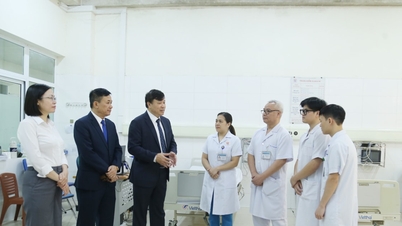

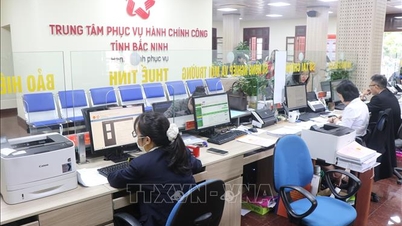

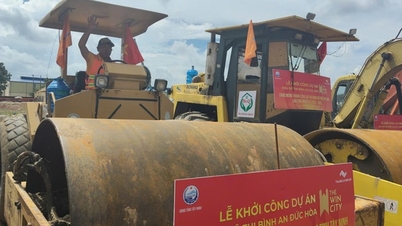




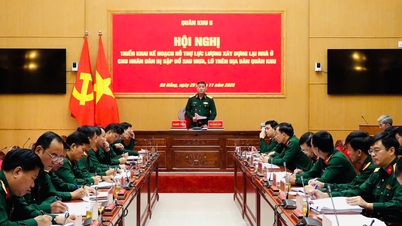




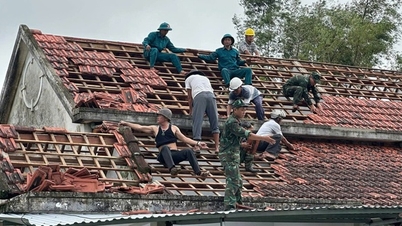















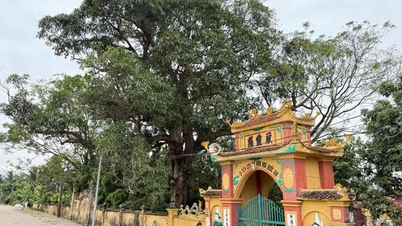


















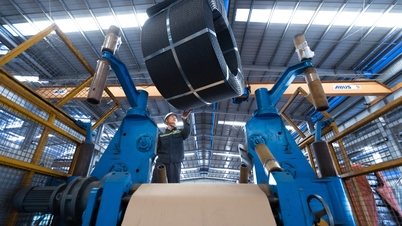



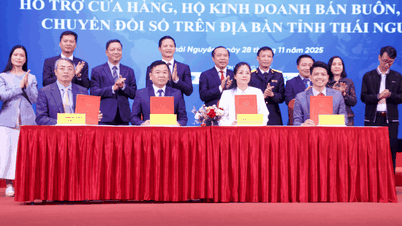















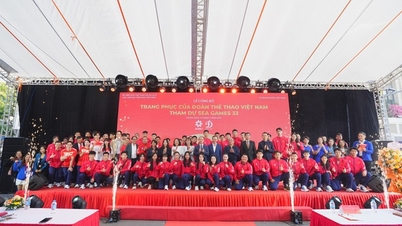
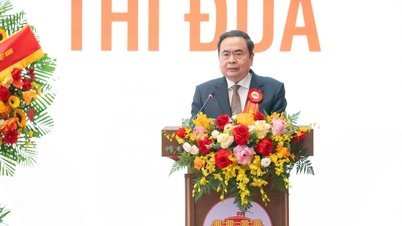



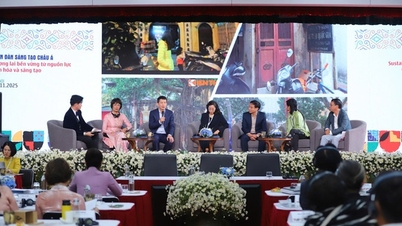
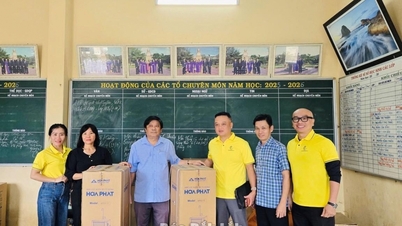
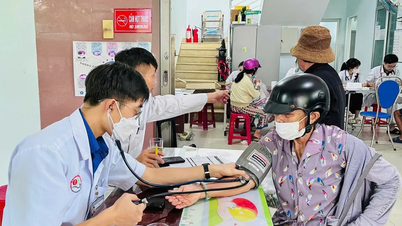

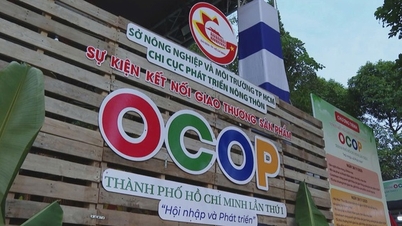




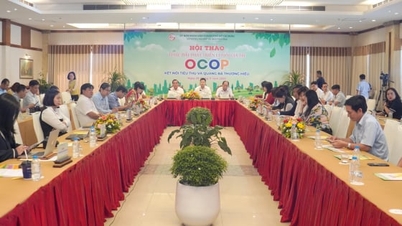


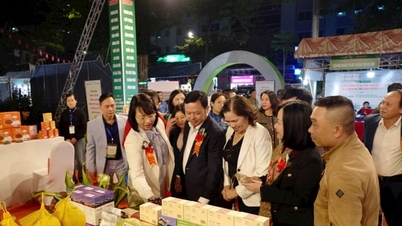








Comment (0)